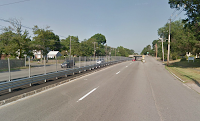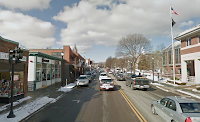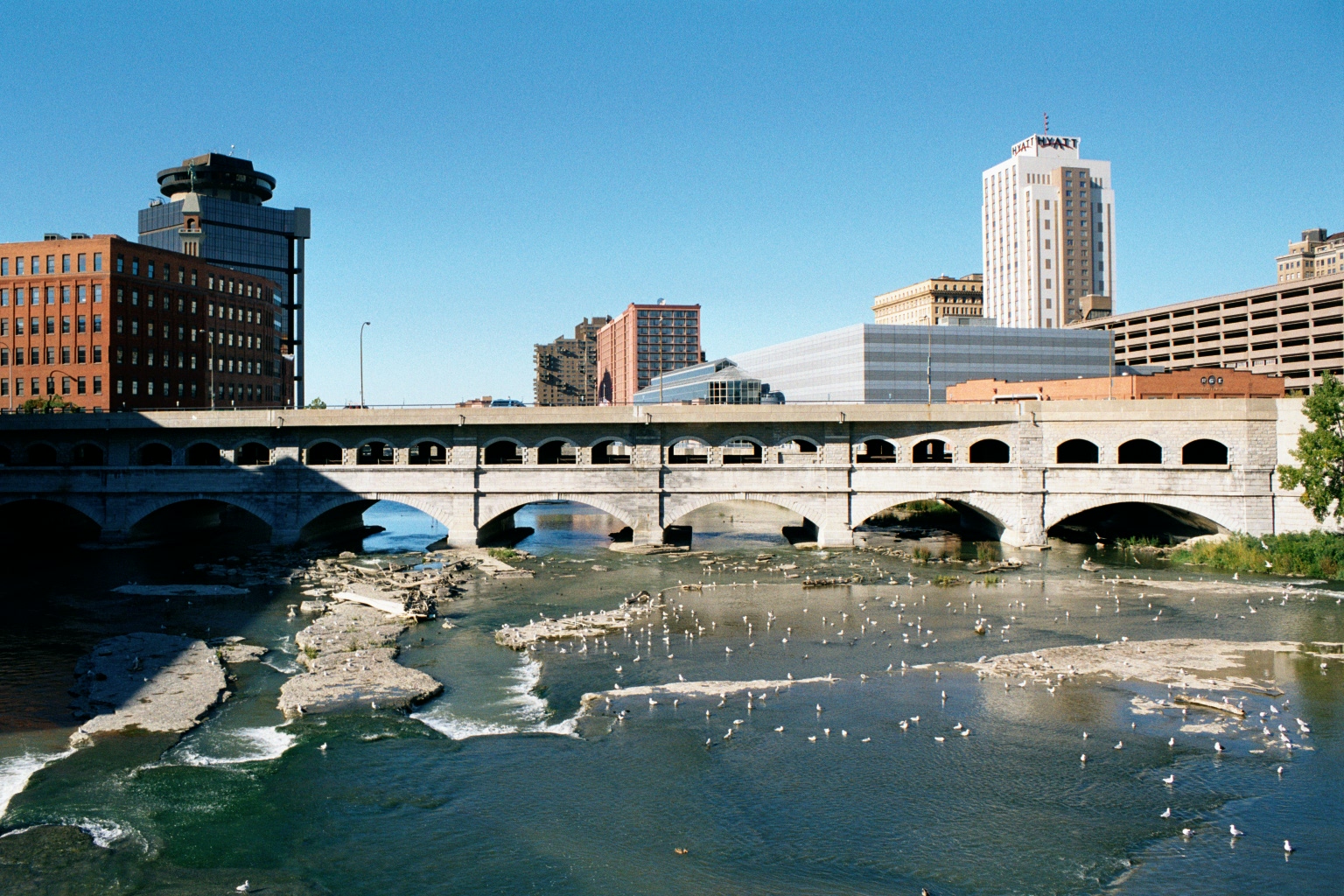Last week we examined some of the changes—many of which I think are positive—to the Google Maps interface. However, Google Maps has fallen in to an old trap which harms the overall product: they unilaterally classify US Routes as a higher status road type. This leads to maps where some minor roads appear to be highways, while other routes with higher capacities and uses, appear to be smaller roads.
First, a case from west of Boston:
The two red circles on the map above represent the locations of the photos below. Which is which?
It would make sense for the highway on the left would be shown with a higher symbol level than the city street on the right. This, however is not the case. The image on the left (both from Streetview) is of Massachusetts Route 9 in Newton, showing a typical section of this divided highway. The image on the right shows a typical section of US Route 20 in Watertown, a mostly two-lane city street. Note on this map the second-level (lighter orange) roadways. They are few in number, and therefore quite prevalent. Thus, you would think that they are major, not-quite Interstate-level highways. So if you wanted to avoid the Turnpike (I-90) you’d be right in thinking that Route 20 is a viable alternative.
If Google Maps is going to make these changes, they should review the actual functionality of each roadway to properly classify them based on speed and capacity. Simply labeling every US highway as a higher category of roadway is folly.
It’s helpful to touch on the history of the US Highway numbering system in discussing the use of US Highways today (there is a good article on Wikipedia). The system was put in to place in the mid-1920s, so it is nearly a century old. Before that point, most roads were named (often as Auto Trails), although many of these names were of routes which were not improved; US Army convoys in 1919 and 1920 averaged only about 30 to 60 miles per day (not per hour; per day). The US Route numbering system was more of a way to codify these names across state lines (as New England had done a few years earlier; which is why many state highways in New England retain their number when crossing state lines) than to build improved highways.
So Route 20 was numbered in 1926, having previously been New England Route 5. Route 9 was originally the Boston-Worcester Turnpike, and was rebuilt in the 1930s when streetcar operations ceased, becoming one of the earliest roads in New England with some grade separation. (It has barely been improved since; it still has steep grades and some traffic lights. Of course, neither has Route 20.)
Thus, Google Maps, in 2013, is basing much of its route hierarchy on a numbering system put in to place nearly a century ago. Not only does this make little sense, but it harms the usability of its mapping interface.





